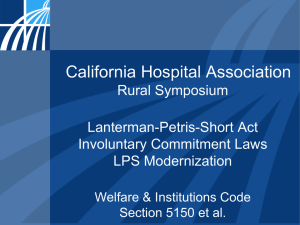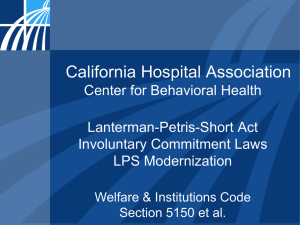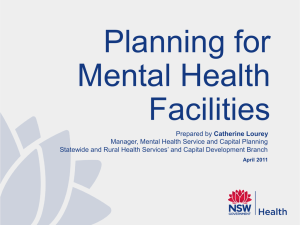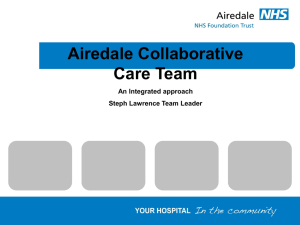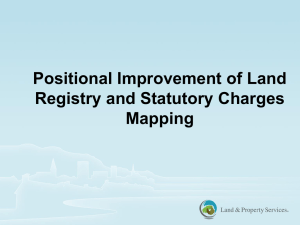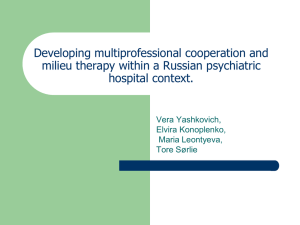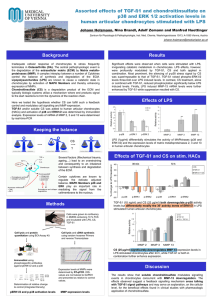5150 Bed Shortage - Disability Rights California
advertisement
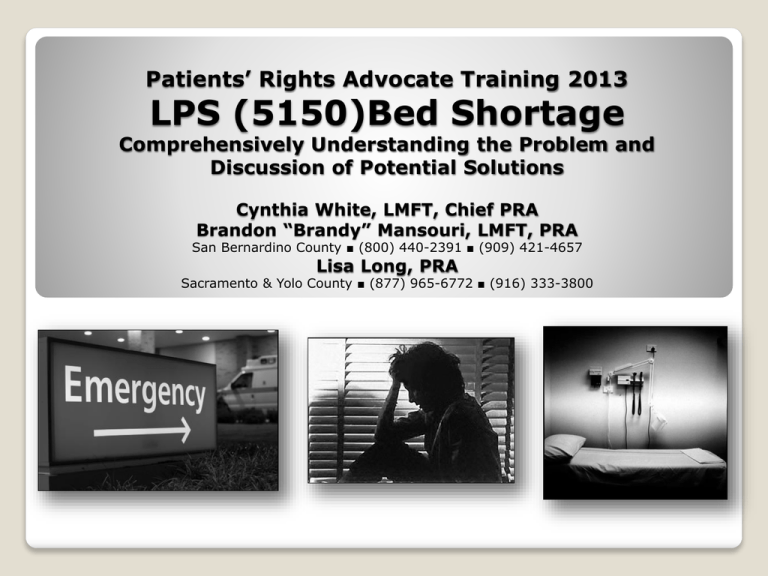
Patients’ Rights Advocate Training 2013 LPS (5150)Bed Shortage Comprehensively Understanding the Problem and Discussion of Potential Solutions Cynthia White, LMFT, Chief PRA Brandon “Brandy” Mansouri, LMFT, PRA San Bernardino County ■ (800) 440-2391 ■ (909) 421-4657 Lisa Long, PRA Sacramento & Yolo County ■ (877) 965-6772 ■ (916) 333-3800 Training Agenda Sample Case Pertinent Background Relevant Laws & Regulations Lanterman Petris Short Act Types of Facilities Welfare & Institutions Code (WIC) Emergency Medical Treatment & Active Labor Act (EMTALA) Health & Safety Code (H & S) Constitutional Rights Availability of Facilities Issues Impacting the System Loss of Psychiatric Beds Patient-to-Bed Gap The LPS Bed Shortage Revisiting the Case Sample Innovative Solutions in Sacramento County Resources Activity & Discussion Issues Impacting the System Consider the Following Case: Law Enforcement 5150’s Client Law Enforcement takes Client to the closest Emergency Room (ER), which is not an LPS Designated Facility Client “eventually” ends up at a LPS Facility PRA meets Client in preparing for Certification Review Hearing Client indicates she was in the ER, tied to a gurney for 8 days before getting transferred to LPS Facility Pertinent Background Lanterman Petris Short Act History: In 1967, CA legislature instituted a bill called Lanterman Petris Short Act to change how persons with mental disabilities are treated. Mandated least restrictive treatment setting & given due process in court if involuntarily detained. Relevant Intent: Indicated in Welfare & Institutions Code, Division 5, Part 1, Chapt. 1 End inappropriate, indefinite, involuntary commitment of mentally disabled person & protect them from criminal acts Provide prompt evaluation & treatment of persons with serious mental disorders Safeguard individual rights through judicial review Encourage full use of all existing agencies, professional personnel & public funds to accomplished these objectives Types of Facilities General Acute Care Hospitals: Health & Safety Code, Division 2, Chapter 2, Article 1, §1250 (a) Psychiatric Health Facility: Health & Safety Code, Division 2, Chapter 2, Article 1, §1250.2 Acute Psychiatric Hospitals: Health & Safety Code, Division 2, Chapter 2, Article 1, §1250 (b) California Code of Regulations, Title 22, Division 5, Chapter 2 Sub-Types: County Private Free-Standing Relevant Laws & Regulations Welfare & Institutions Code (WIC) Division 5, Chapt. 2, Article 1: Detention of Mentally Disordered persons for Evaluation and Treatment WIC §5150: “…take…the person into custody & place him or her in a facility designated by the County & approved by the State DMH as a facility for 72-hour treatment & evaluation.” WIC §5151: “If the facility for 72-hour treatment & evaluation admits the person, it may detain him or her for a period not to exceed 72 hours.” WIC §5152: (a) “Each person admitted to a facility for 72-hour treatment & evaluation…shall receive an evaluation as soon as possible after he or she is admitted & receive whatever treatment & care his or her condition requires for the full period he or she is held.” Emergency Medical Treatment & Active Labor Act (EMTALA) 42 USC 1395dd or Section 1867 of Social Security Act When a person comes to a hospital seeking medical care regardless of their ability to pay, the hospital must preform an Medical Screening Exam to determine if there is an emergency medical condition and if so, must stabilize it prior to discharging or transferring the patient. 5150 patients are, by definition suffering from a Psychiatric Emergency Medical Condition but if the facility is not LPS designated, it cannot admit the patient involuntarily & must transfer the involuntary patient to one that is LPS designate. Even if no apparent medical emergency, 5150 patients often brought to an acute care hospital ED because of location or to get medical clearance Health & Safety Code (H & S) 1799.111 Also referred to as “Hospital ER 24 Hour Rule” In Jan 2008, California extended the 8 hour rule that allows General Acute Care Hospitals to detain for up to 24 hours Detainment extension was to arranged for mental health treatment services for any person who is: Gravely disabled Danger to self Danger to others As a result of a mental disorder And cannot be safely released. Constitutional Rights The Bill of Rights and 14th Amendment The overwhelming majority of court decisions that define American civil liberties are based on the Bill of Rights, the first ten amendments added to the Constitution in 1791. Civil liberties protected in the Bill of Rights may be divided into two broad areas: freedoms and rights guaranteed in the First Amendment (religion, speech, press, assembly, and petition) and liberties and rights associated with crime and due process. Civil rights are also protected by the Fourteenth Amendment, which protects violation of rights and liberties by the state governments. Title 42, U.S.C., Section 1997 The Department of Justice has the ability to initiate civil actions against mental hospitals, retardation facilities, jails, prisons, nursing homes, and juvenile detention facilities when there are allegations of systemic derivations of the constitutional rights of institutionalized persons The LPS Bed Shortage The Problem Availability of Facilities 25 Counties with no Inpatient Psychiatric Beds Only 13 Counties have child and/or adolescent Beds Loss of Psychiatric Beds Either eliminated psychiatric inpatient care or closed hospital completely 30% Loss of Beds since 1995 Patient-to-Bed Gap Increasing Absolute minimum is 50 public psychiatric beds per 100,000 population Assumes availability of appropriate outpatient services in community 1995, California short by 1,400 (only 29.5 beds per 100,000) 2010, California short by 3,600 (only 17.67 beds per 100,000) Increasing population & need for services Decreasing beds, cuts in funding & diminishing availability of appropriate outpatient services in the community Adult Psychiatric Beds 25 Counties have no inpatient psychiatric services (white): Del Norte Siskiyou Modoc Trinity Shasta Lassen Tehama Plumas Mendocino Glenn Lake Colusa Sierra Yuba Nevada Amador Alpine Calaveras Mono Mariposa Madera San Benito Inyo Kings Imperial Child/Adolescent Psychiatric Beds Only 13 Counties have have child &/or adolescent inpatient psychiatric services (orange): San Francisco San Mateo Solano Contra Costa Alameda Sacramento San Joaquin Ventura Los Angeles San Bernardino Orange Riverside San Diego Revisiting the Case Sample: Activity Group Discussion For Discussion: What are the relevant issues? What are the potential consequences? How could the issues be addressed & resolve? Case Facts: Law Enforcement 5150’s Client Law Enforcement takes Client to the closest Emergency Room (ER), which is not an LPS Designated Facility Client “eventually” ends up at a LPS Facility PRA meets Client in preparing for Certification Review Hearing Client indicates she was in the ER, tied to a gurney for 8 days before getting transferred to LPS Facility Issues Impacting the System Transportation Funding Voluntary status & transport Recidivism Impact on Client No prompt evaluation & treatment Further traumatized or decompensating while sitting in ER Decreased confidence in mental health system; less likely to access Impact on Collaterals Good intentions gone bad Guilt, frustration, relational issues Decreased confidence in mental health system; less likely to access Impact on Providers Helpless; no trained or prepared for behavioral health Frustrated Confusion; unclear of mental health system Innovative Solutions In Sacramento County Sacramento County The Problem Budget Cuts Mental Health Patients’ Civil Rights Patients in non-designated hospital over 24 hours Sequential 5150s Other Issues The Solution Process Consultation Correspondence with Mental Health Director Response from Mental Health Director Procedural changes Process of change in non-designated facilities Education Resources California Hospital Association Report, (2/27/12): http://mentalillnesspolicy.org/states/california/calpsychbedshortage.pdf No Room at the Inn: Trends and Consequences of Closing Public Psychiatric Hospitals 2005 – 2012, (July 19, 2012): http://tacreports.org/storage/documents/no_room_at_the_inn-2012.pdf Impact of the Mental Healthcare Delivery System on California Emergency Departments (February 2012), Western Journal of Emergency Medicine: www.ncbi.nlm.nih.gov/pmc/articles/PMC3298229/pdf/wjem-13-01-51.pdf California Department of Mental Health Laws & Regulations
